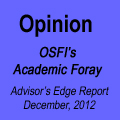Note that the rate reported in this post has been cancelled and corrected by the issuer.
Husky Energy has announced:
that the Company does not intend to exercise its right to redeem its Cumulative Redeemable Preferred Shares, Series 3 (Series 3 Shares) on December 31, 2019. As a result, subject to certain conditions, the holders of Series 3 Shares have the right to choose one of the following options with regard to their shares:
retain any or all of their Series 3 Shares and continue to receive an annual fixed-rate dividend paid quarterly; or
convert, on a one-for-one basis, any or all of their Series 3 Shares into Cumulative Redeemable Preferred Shares, Series 4 (Series 4 Shares) of Husky and receive a floating rate quarterly dividend.
Conversion to Series 4 Shares is subject to the conditions that: (i) if Husky determines that there would be less than one million Series 3 Shares outstanding after December 31, 2019, then all remaining Series 3 Shares will automatically be converted to Series 4 Shares on a one-for-one basis on December 31, 2019, and (ii) if Husky determines that there would be less than one million Series 4 Shares outstanding after December 31, 2019, no Series 3 Shares will be converted into Series 4 Shares. In either case, Husky will issue a news release to that effect no later than December 24, 2019.Holders of Series 3 Shares who choose to retain any or all of their shares will receive the new fixed-rate quarterly dividend applicable to the Series 3 Shares for the five-year period commencing December 31, 2019, to, but excluding, December 31, 2024 of 4.636%, being equal to the sum of the Government of Canada five-year bond yield of 1.506% plus 3.13% in accordance with the terms of the Series 3 Shares, subject to the conditions described above.
Holders of Series 3 Shares who choose to convert their shares to Series 4 Shares will receive a new floating-rate quarterly dividend applicable to the Series 4 Shares. The dividend rate applicable to the Series 4 Shares for the three-month period commencing December 31, 2019 to, but excluding, March 31, 2020 will be 4.782%, being equal to the annual rate for the most recent auction of 90-day Government of Canada Treasury Bills of 1.652% plus 3.13%, in accordance with the terms of the Series 4 Shares (the Floating Quarterly Dividend Rate), subject to the conditions described above. The Floating Quarterly Dividend Rate will be reset every quarter.
Beneficial owners of Series 3 Shares who wish to exercise the right of conversion should communicate as soon as possible with their brokers or other nominees in order to meet the deadline for registered holders to exercise such right, which is 5 p.m. ET on December 16, 2019. It is recommended this communication be had well in advance of the deadline in order to provide the brokers or other intermediaries with time to complete the necessary steps. Holders of Series 3 Shares who do not exercise the right of conversion by this deadline will continue to hold Series 3 Shares with the new annual fixed-rate dividend, subject to the conditions described above.
Holders of the Series 3 Shares and the Series 4 Shares will have the opportunity to convert their shares again on December 31, 2024 and every five years thereafter as long as the shares remain outstanding.
For more information on the terms of, and risks associated with, an investment in the Series 3 Shares and the Series 4 Shares, please see the Company’s prospectus supplement dated December 2, 2014 on www.sedar.com
HSE.PR.C is a FixedReset, 4.50%+313, that commenced trading 2014-12-9 after being announced 2014-12-1. The issue is tracked by HIMIPref™ and is been assigned to the FixedResets-Discount subindex.
The most logical way to analyze the question of whether or not to convert is through the theory of Preferred Pairs, for which a calculator is available. Briefly, a Strong Pair is defined as a pair of securities that can be interconverted in the future (e.g., HSE.PR.C and the FloatingReset that will exist if enough holders convert). Since they will be interconvertible on this future date, it may be assumed that they will be priced identically on this date (if they aren’t then holders will simply convert en masse to the higher-priced issue). And since they will be priced identically on a given date in the future, any current difference in price must be offset by expectations of an equal and opposite value of dividends to be received in the interim. And since the dividend rate on one element of the pair is both fixed and known, the implied average rate of the other, floating rate, instrument can be determined. Finally, we say, we may compare these average rates and take a view regarding the actual future course of that rate relative to the implied rate, which will provide us with guidance on which element of the pair is likely to outperform the other until the next interconversion date, at which time the process will be repeated.
We can show the break-even rates for each FixedReset / FloatingReset Strong Pair graphically by plotting the implied average 3-month bill rate against the next Exchange Date (which is the date to which the average will be calculated). Inspection of the graph and the overall average break-even rates for extant pairs will provide a guide for estimating the break-even rate for the pair now under consideration assuming, of course, that enough conversions occur so that the pair is in fact created.
The market has little enthusiasm for floating rate product; the implied rates until the next interconversion are generally well below the current 3-month bill rate as the averages for investment-grade and junk issues are at +0.89% and +1.20%, respectively. Whatever might be the result of the next few Bank of Canada overnight rate decisions, I suggest that it is unlikely that the average rate over the next five years will be lower than current – but if you disagree, of course, you may interpret the data any way you like.
Since credit quality of each element of the pair is equal to the other element, it should not make any difference whether the pair examined is investment-grade or junk, although we might expect greater variation of implied rates between junk issues on grounds of lower liquidity, and this is just what we see.
If we plug in the current bid price of the HSE.PR.C FixedReset, we may construct the following table showing consistent prices for its soon-may-be-issued FloatingReset counterpart given a variety of Implied Breakeven yields consistent with issues currently trading:
| Estimate of FloatingReset (received in exchange for HSE.PR.C) Trading Price In Current Conditions | |||||
| Assumed FloatingReset Price if Implied Bill is equal to |
|||||
| FixedReset | Bid Price | Spread | 1.50% | 1.00% | 0.50% |
| HSE.PR.C | 16.45 | 313bp | 16.44 | 15.98 | 15.51 |
Based on current market conditions, I suggest that the FloatingResets that will result from conversion are likely to trade below the price of their FixedReset counterparts, HSE.PR.C. Therefore, it seems likely that I will recommend that holders of HSE.PR.C continue to hold the issue and not to convert, but I will wait until it’s closer to the December 16 notification deadline before making a final pronouncement. I will note that once the FloatingResets commence trading (if, in fact, they do) it may be a good trade to swap one issue for the other in the market once both elements of each pair are trading and you can – hopefully – do it with a reasonably good take-out in price, rather than doing it through the company on a 1:1 basis. But that, of course, will depend on the prices at that time and your forecast for the path of policy rates over the next five years. There are no guarantees – my recommendation is based on the assumption that current market conditions with respect to the pairs will continue until the FloatingResets commence trading and that the relative pricing of the two new pairs will reflect these conditions.











































































































BPO.PR.A To Reset At 4.709%
Tuesday, December 3rd, 2019Brookfield Office Properties Inc., a subsidiary of Brookfield Property Partners L.P. has announced:
BPO.PR.A is a FixedReset, 4.75%+315, that commenced trading 2014-10-23 after being announced 2014-10-7. The issue is tracked by HIMIPref™ but relegated to the Scraps index on credit concerns.
The most logical way to analyze the question of whether or not to convert is through the theory of Preferred Pairs, for which a calculator is available. Briefly, a Strong Pair is defined as a pair of securities that can be interconverted in the future (e.g., BPO.PR.A and the FloatingReset that will exist if enough holders convert). Since they will be interconvertible on this future date, it may be assumed that they will be priced identically on this date (if they aren’t then holders will simply convert en masse to the higher-priced issue). And since they will be priced identically on a given date in the future, any current difference in price must be offset by expectations of an equal and opposite value of dividends to be received in the interim. And since the dividend rate on one element of the pair is both fixed and known, the implied average rate of the other, floating rate, instrument can be determined. Finally, we say, we may compare these average rates and take a view regarding the actual future course of that rate relative to the implied rate, which will provide us with guidance on which element of the pair is likely to outperform the other until the next interconversion date, at which time the process will be repeated.
We can show the break-even rates for each FixedReset / FloatingReset Strong Pair graphically by plotting the implied average 3-month bill rate against the next Exchange Date (which is the date to which the average will be calculated). Inspection of the graph and the overall average break-even rates for extant pairs will provide a guide for estimating the break-even rate for the pair now under consideration assuming, of course, that enough conversions occur so that the pair is in fact created.
Click for Big
The market has little enthusiasm for floating rate product; the implied rates until the next interconversion are generally well below the current 3-month bill rate as the averages for investment-grade and junk issues are at +0.89% and +1.20%, respectively. Whatever might be the result of the next few Bank of Canada overnight rate decisions, I suggest that it is unlikely that the average rate over the next five years will be lower than current – but if you disagree, of course, you may interpret the data any way you like.
Since credit quality of each element of the pair is equal to the other element, it should not make any difference whether the pair examined is investment-grade or junk, although we might expect greater variation of implied rates between junk issues on grounds of lower liquidity, and this is just what we see.
If we plug in the current bid price of the BPO.PR.A FixedReset, we may construct the following table showing consistent prices for its soon-may-be-issued FloatingReset counterpart given a variety of Implied Breakeven yields consistent with issues currently trading:
Price if Implied Bill
is equal to
Based on current market conditions, I suggest that the FloatingResets that will result from conversion are likely to trade below the price of their FixedReset counterparts, BPO.PR.A. Therefore, it seems likely that I will recommend that holders of BPO.PR.A continue to hold the issue and not to convert, but I will wait until it’s closer to the December 16 notification deadline before making a final pronouncement. I will note that once the FloatingResets commence trading (if, in fact, they do) it may be a good trade to swap one issue for the other in the market once both elements of each pair are trading and you can – hopefully – do it with a reasonably good take-out in price, rather than doing it through the company on a 1:1 basis. But that, of course, will depend on the prices at that time and your forecast for the path of policy rates over the next five years. There are no guarantees – my recommendation is based on the assumption that current market conditions with respect to the pairs will continue until the FloatingResets commence trading and that the relative pricing of the two new pairs will reflect these conditions.
Posted in Issue Comments | No Comments »